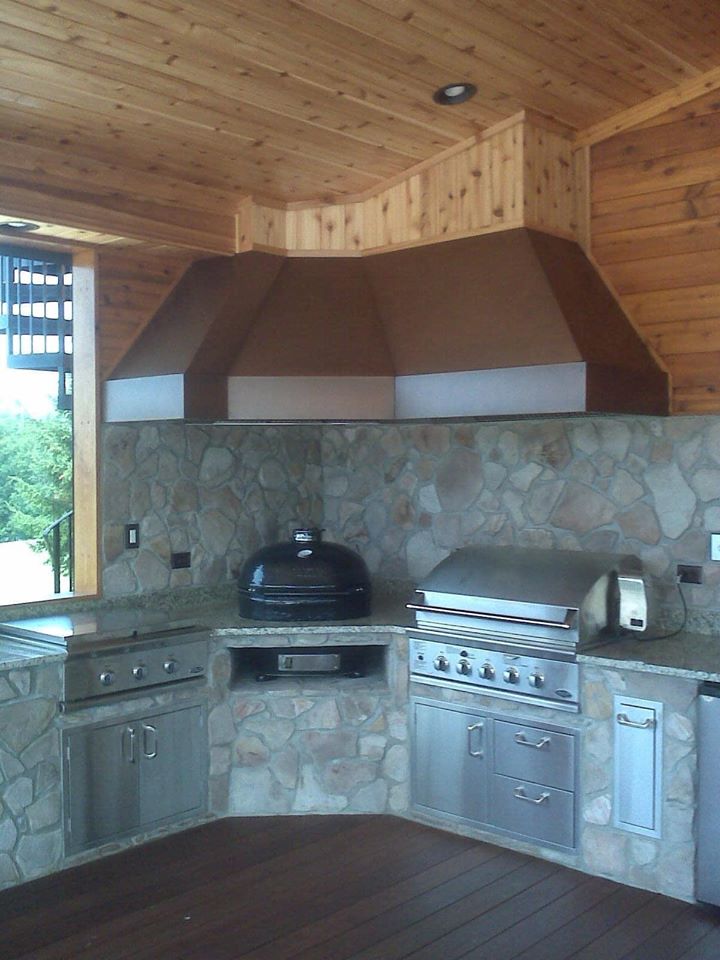- Removing the Protective Film
High-end outdoor range hoods may be covered fully or partially with a protective film to avoid scratching during installation. It is common for homeowners to get surprised when unpacking their range hood for the first time when some parts look white instead of stainless steel. Your installer needs to be aware that this should stay in place for the duration of install to prevent scratches and dents when making adjustments.
- Using the Wrong Duct Type and Size

Installing an outdoor range hood with a smaller duct that the manufacturer’s recommendations can lead to loss of performance or overheating problems that cause mechanical failure. High-performance range hoods require rigid ducting since flexible ducting can create turbulence because of its ridged walls. The airflow in flexible ducting is randomized instead of creating a smooth stream resulting in loss of performance as well as additional noise.
- Discharging to the Attic or Enclosed Space
Terminating the duct in an enclosed space such as the attic is one of the serious mistakes you can make when installing an outdoor range hood. Channeling the warm moist air from your kitchen to your attic not only leads to mold growth but can also cause performance issues. The hood may not operate efficiently due to the backpressure in the attic space. It also increases the likelihood of smoke being channeled back into the kitchen resulting in poor air quality.
- Lack of Proper Support
Attaching the unit to the sheet-rock alone is one of the most dangerous problems that can happen during a range hood installation. Any range hood should be attached to joists or structural beams regardless of the weight to provide proper long-term support. Alternatively, you can use a cross-brace made from strong material such as three-quarter-inch plywood if there is no joist or beam at the location where you intend to install your range hood.
- Incorrect Height Measurements
Typical range hoods are often installed 26 to 30 inches above the cooking area but can also vary between 18 to 36 inches high. The best way to know which height works best for your hood is by checking the manufacturer’s recommendations. Installing the range hood too high can reduce its efficiency to capture smoke and steam as it spreads out aggressively instead of rising perfectly in a straight line. Installing it too low can also make it difficult to clean and provides a limited headroom above your cooktop.
- Poor Duct Termination
An outdoor range hood with roof-mounted ducts should end with a U-shaped elbow cap to allow warm air and other combustion products to exit while keeping out both rain and snow. On the other hand, a duct that exits through a sidewall should be terminated with a duct cap. The cap used in termination should have the same diameter or size as the duct.
Using a smaller duct termination cap could lead to problems with static pressure and airflow. It is important to have a damper at the end of the duct regardless of the type of termination to prevent air from flowing back into the duct and to keep out birds, insects, and rodents.
Failing to Check the Intended Functions
Many homeowners focus more on the flurry of activities during their kitchen upgrade that they forget to check whether the range hood controls are functioning as intended. To ensure your range hood is working fine, plug it in and check whether the lights and blowers are operating at their optimum capacity. Keep in mind that these functions may not work if your range hood installation is not done right.
Installation problems can reduce your range hood performance, as it will not fulfill its intended purpose in the kitchen. Most importantly, you need to hire a professional who is conversant with all the installation procedures of your range hood based on manufacturer’s recommendations and the experience they have over the years.
